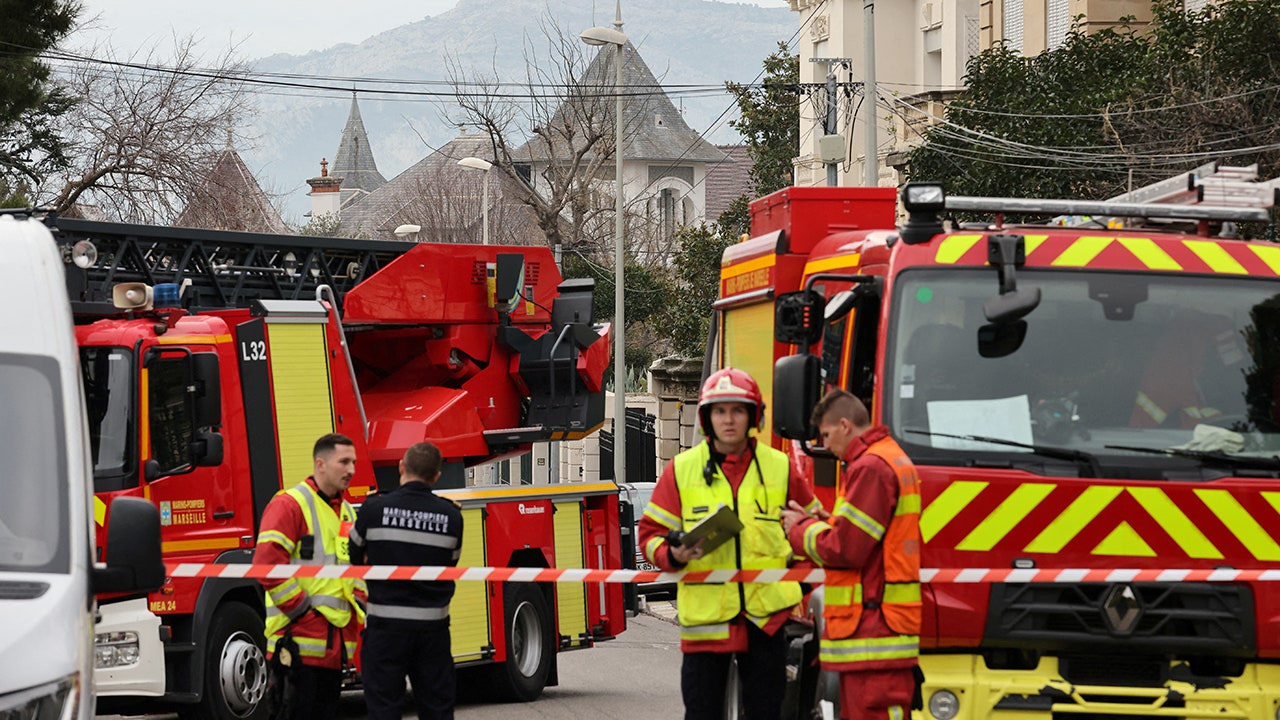An American-made, precision guided bomb that homes in on specific targets and, ideally, limits civilian casualties, was used in airstrikes in Gaza that killed dozens of Palestinians, including women and children.
The weapon, the GBU-39, or small-diameter bomb, was used in an attack at a former United Nations school on Thursday and in a May 26 strike in Rafah. In both cases, the Israeli military defended its actions, saying the strikes were aimed at militants using civilians as human shields. The Gaza health authorities said that civilians had also been killed, and there were videos and pictures of women and children among the dead.
Two weapons experts told The New York Times that Israel has appeared to increase the use of the bombs since the start of this year, compared with the war’s earliest days when it launched them in only 10 percent of airstrikes against Gaza. As a recent spate of Israeli strikes demonstrates, even a relatively diminutive bomb can inflict severe civilian casualties.
“The thing is, even using a smaller weapon, or using a precision guided weapon, doesn’t mean you don’t kill civilians, and it doesn’t mean that all of your strikes are suddenly lawful,” said Brian Castner, a weapons expert at Amnesty International.
Early in the war, the Israeli military mounted full-scale invasions of Gazan cities with tanks, artillery and 2,000-pound bombs, earning it international condemnation for heavy civilian casualties.
Under prodding from the Biden administration, analysts said, Israel has shifted its fighting strategy toward low-intensity operations and targeted raids, and is now relying more heavily on the GBU-39. The bomb weighs 250 pounds, including 37 pounds of explosives, and is fired from warplanes.
Ryan Brobst, a military analyst at the Foundation for Defense of Democracies, said the shift appeared to start in January or February and “likely explains the change in munitions used.”
Last month, an unexploded GBU-39 was found at a school in Jabalia in the northern Gaza Strip, and the distinctive rear tail fin of the same kind of bomb turned up at the scene of a May 13 strike farther south on a family home and school in Nuseirat that killed at as many as 30.
And remnants of GBU-39s showed up outside residential homes that were hit by deadly Israeli airstrikes in Rafah in April, at an unidentified location in Gaza in March, and in Tal-Al Sultan in January, analysts said.
These examples of Israel’s use of the GBU-39s represent only a fraction of what experts estimate have, overall, been at least tens of thousands of airstrikes with a variety of weapons. But wreckage found in the aftermath of airstrikes and requests to replenish Israel’s stockpiles signal that Israel clearly has stepped up its use of the GBU-39s, several analysts said.
“We’ve been seeing a lot more GBU-39 scrap in the last few months,” Mr. Castner said. “The trend has been from bigger to smaller.” (However, he said, investigators for Amnesty continue to see evidence of large munitions like the Mark-80 series, which weigh up to 2,000 pounds and were launched into densely populated areas early in the war.)
Only the Israeli military has a precise list of how often, and where, it has used GBU-39s since the war began in October, after Hamas militants killed 1,200 Israelis and took 250 hostages, Israel says. Israeli military officials did not answer questions about the weapon in Gaza, but said in a written statement to The New York Times on Thursday that “when the type of target and the operational circumstances allow, the I.D.F. prefers to use lighter munitions.”
The statement went on to say, “The munitions chosen by the I.D.F. are chosen in a way that match the type of munition to the specific target, with the intention of accomplishing the military goal while taking the environment into account and mitigating the harm to the civilian population as much as possible.”
During the first six weeks of the war, Israel routinely dropped 2,000-pound bombs in southern Gaza, where civilians had been told to move for their safety. The strikes reduced apartment buildings to huge craters and killed thousands of people, an investigation by The Times concluded in December.
In November, U.S. officials urged Israel to use smaller bombs to better protect civilians. Just a month earlier, the manufacturer of the GBU-39, Boeing Corp., had expedited delivery of 1,000 of the weapons from a 2021 order that had not yet been completed.
By December, President Biden was warning Israel that it was losing global support in the war because of “the indiscriminate bombing that takes place.”
“We have made it clear to the Israelis, and they’re aware, that the safety of innocent Palestinians is still of great concern,” Mr. Biden said on Dec. 12. “And so the actions they’re taking must be consistent with attempting to do everything possible to prevent innocent Palestinian civilians from being hurt, murdered, killed, lost.”
But even the smaller bombs have caused collateral damage.
The first known use of GBU-39s in the current war was on Oct. 24 in Khan Younis, where two family homes were struck with four of the bombs, one expert said.
In January, Israel struck the top two floors of a five-story residential building in Rafah shortly before 11 p.m. It killed 18 civilians, including four women and 10 children, according to an Amnesty International investigation that concluded that the bomb used in the strike was a GBU-39. It was among examples compiled in April by Amnesty International of potentially unlawful use of American-made weapons in Israel, going back to January 2023.
The State Department concluded in May that Israel had most likely violated humanitarian standards for failing to protect civilians in Gaza, but said it had not found specific instances that would justify withholding American military aid.
Current and former U.S. officials said Israel generally does not share information on its use of GBU-39s with Washington, and a State Department system created in August to track civilian deaths by American-made weapons in foreign conflicts has struggled to compile a comprehensive list. One U.S. official said the May 26 airstrike in Rafah was being investigated as part of the new process to determine whether humanitarian laws are violated with the use of Americans arms.
Israel has been deploying the GBU-39s since 2008, using them in Gaza, Syria and Lebanon. The bombs have a range of at least 40 miles and are guided by GPS with coordinates for specific targets set before the weapons are launched. Experts say the GBU-39 is so precise that it can hit specific rooms within buildings.
The United States has delivered at least 9,550 GBU-39s to Israel since 2012, including the 1,000 shipped last fall under the expedited order, according to data from the Stockholm International Peace Research Institute, which tracks arms transfers. Mr. Brobst, of the Foundation for Defense of Democracies, said more have probably been shipped since.
Most strike aircraft can carry eight GBU-39s at a time, and each can be independently guided to various targets. That makes them an efficient weapon for Israel’s army, said N.R. Jenzen-Jones, director of Armament Research Services.
In terms of limiting civilian casualties, however, “it’s not a panacea,” Mr. Jenzen-Jones said. “It may be small relative to other aerial bombs, but the small-diameter bomb still packs a significant punch.”
Myra Noveck contributed reporting from Jerusalem, and Eric Schmitt from Washington.





